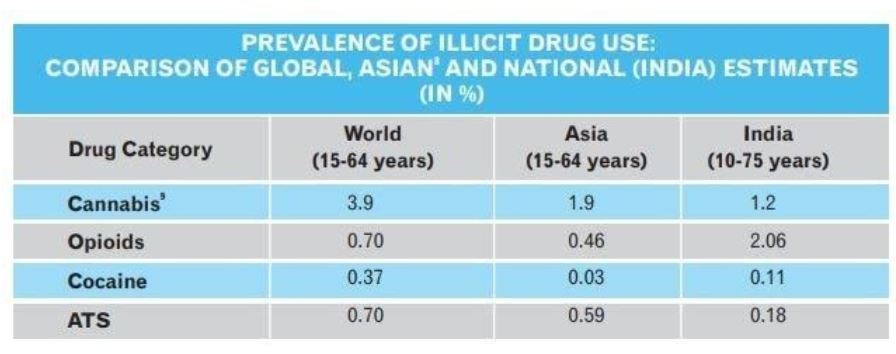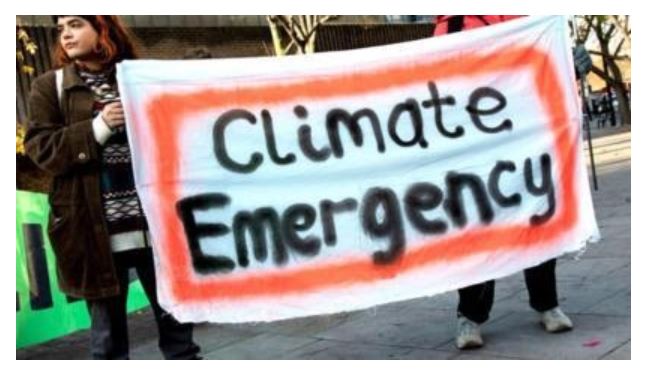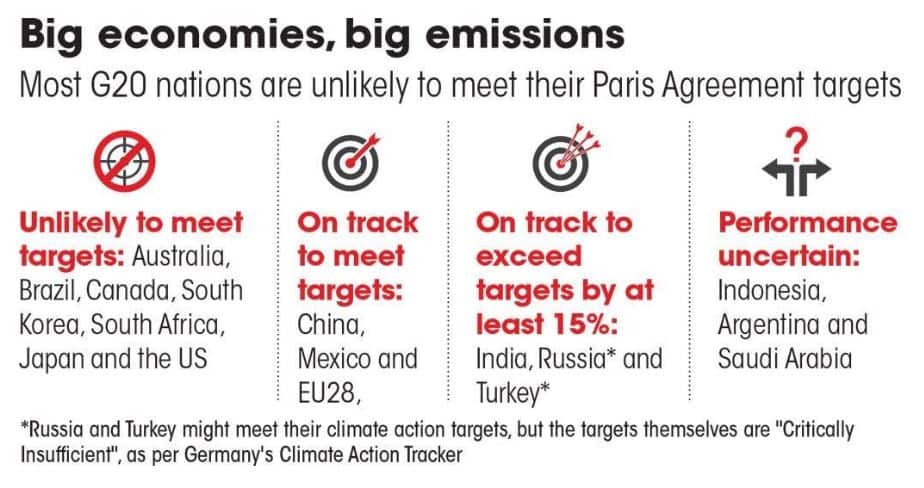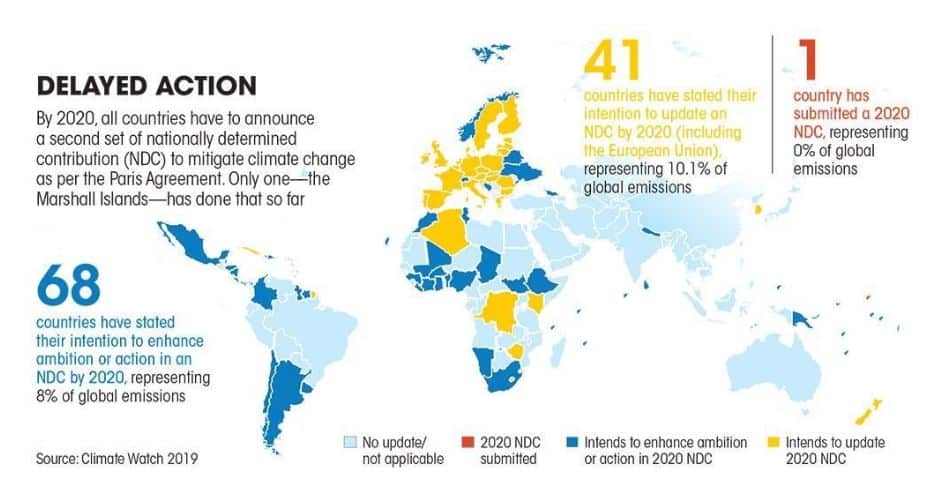IASbaba's Daily Current Affairs Analysis
IAS UPSC Prelims and Mains Exam – 21st December 2019
Archives
(PRELIMS + MAINS FOCUS)
Operation Prahar: Started by Haryana Police to fight Organised Crime
Part of: GS Prelims and GS Mains III- Internal Security
In News
- Operation Prahar’ is a Haryana police drive to fight organised crime and growing drug menace in the State.
- Haryana government also announced that a separate “Haryana Narcotics Bureau” would be set up in an attempt to curb drug menace in the State.
Do You Know?
- India’s strategic location places it amid two largest sources of illicit drugs in South Asia- Golden Crescent (Pakistan, Afghanistan, and Iran) on the northwest and the infamous Golden Triangle (Myanmar, Thailand, and Laos) on the northeast.

Daily Current Affairs IAS | UPSC Prelims and Mains Exam – 21st December 2019
Dolphin’s Nose: Joint Operation to crackdown on Espionage racket
Part of: GS Prelims and GS Mains III – Security
In News
- In a joint operation —‘Dolphin’s Nose’ — conducted by the Andhra Pradesh State, Naval and Central intelligence agencies, seven naval personnel and hawala operator were arrested for alleged espionage and suspected links with Pakistan’s Inter Services Intelligence (ISI)
- Two of the personnel were from the Eastern Naval Command (ENC) and the rest from the Western Naval Command (WNC).
- The importance of the Eastern Naval Command (HQ at Vishakapatnam, AP) has grown with the presence of the Ship Building Centre, which builds the Arihant-class nuclear submarines.
- The ENC is also coming up withstrategic Naval Alternative Operations Base (NAOB)in Visakhapatnam district.
- The NAOB and the Arihant Project are listed under the “top-secret” strategic weapons projects and are directly under the control of the Prime Minister’s Office.
Apache attack helicopters: India to import more from USA
Part of: GS Prelims and GS Mains II- International Affairs; GS-III- Security
In News
- In early 2020, India will probablysign a deal with Boeing Company of USAfor additional six AH-64E Apache attack helicopters, estimated to cost around $930 million.
- These are in addition to 22 Apaches already being inducted by the Indian Air Force (IAF).
- It will replace the ageing Russian Mi-35 attack helicopters in service.
- Feature of Apache helicopters are:
- It is capable of delivering variety of weapons which include fire and forget anti-tank guided missiles
- Air to ground Hellfire missiles
- 70 mm Hydra rockets
- Air to air Stinger missiles
- They are day/night, all weather capable
- They also have high agility and survivability against battle damage.
Pinaka missile system successfully flight-tested
Part of: GS Prelims and GS-III- Security
In News
- India successfully conducted test firing of the indigenously developed Pinaka missile system from the Integrated Test Range at Chandipur off the Odisha coast
About Pinaka
- It is developed by DRDO
- Pinaka is a Multi-Barrel Rocket System to supplement the existing artillery gun at ranges beyond 30 kilometres to make precision hits.
- The guided weapon system is equipped with state-of-the-art guidance kit comprising of an advanced navigation and control system.
- The system is mounted on a Tatra truck for mobility.
Digital Communications Commission (DCC): Approves auction of Spectrum
Part of: GS Prelims and GS-III- Infrastructure
In News
- The Digital Communications Commission (DCC) approved plans to auction over 8,300 MHz of spectrum, including airwaves to be used for offering 5G services, with a reserve price of ₹5.22 lakh crore.
- Challenges for the auction are:
- Spectrum reserve prices 4 to 6 times higher than that of similar spectrum sold recently in several countries
- With high levels of debt and prevailing financial stress in the sector, telecom service providers will find it difficult to raise funds to participate in the auctions
- The quantum of spectrum in the 5G band being put up for auction will be only 175 MHz, ‘woefully inadequate’ for operators to roll out robust 5G networks and services
About Digital Communications Commission
- The Government of India, vide executive resolution has re-designated the Telecom Commission (set up in 1989 by executive order) as the ‘Digital Communications Commission’.
- The DCC consists of a Chairman, four full time members and four part time members. The Secretary to the Government of India in the Department of Telecommunications is the ex-officio Chairman of the DCC.
- The DCC is responsible for:
- Formulating the policy of Department of Telecommunications for approval of the Government;
- Preparing the budget for the Department of Telecommunications for each financial year and getting it approved by the Government; &
- Implementation of Government’s policy in all matters concerning telecommunication.
Import Cover: Rises to 10 months
Part of: GS Prelims and GS-III- Economy
In News
- RBI has stated that the foreign exchange reserves has increased to $429.84 billion as at end June 2019 from $412.47 billion as at end March 2019.
- As a result, the import cover rose to 10 months compared with 9.6 months
- Import Cover measures the number of months of imports that can be covered with foreign exchange reserves available with the central bank of the country.
- Eight to ten months of import cover is essential for the stability of a currency.
(MAINS FOCUS)
ECONOMY
TOPIC: General Studies 3:
- Awareness in the fields of IT
- Challenges to internal security through communication networks, role of media and social networking sites in internal security challenges, basics of cyber security
Tech firms facing antitrust issues
Context:
Google and Amazon are under Scrutiny for their influence on consumer privacy, labor conditions, public discourse and violation of antitrust law
Background
Silicon Valley giants – Facebook, Google, Amazon and Apple – are new age Tech companies which through their data business model have gained tremendous market power and now wield tremendous influence on socio-economic-political aspects of people.
This has led regulators across the world to frame guidelines/policies so as to curb their market monopoly power.
What are the primary sources of tension between these companies and Governments?
There are two sources of tension relating to these four tech firms that have caused alarm across the United States, Europe and elsewhere:
- First, that they may have engaged in anti-competitive behaviour over many years thus undercutting smaller potential rivals and holding onto an outsized market share;
- Second, that as a result of this metastatic growth, they now have a vast influence on politics, policy and personal reputations across the spectrum, making cost of data privacy breaches by these firms catastrophic.
Concerns of each platform
Amazon: It is an online sales platform has disrupted the traditional business of retail sellers and small business. Allegations that Amazon favours its own self-branded products over those of third-party sellers through manipulation of search results.
Apple: Its App Store policies, specifically regarding how Apple ranks search results on that platform, is questioned as it has lead exclusion of certain competing apps from the Store (Ex. Spotify). Questions have also been raised on how Apple determines the share of revenue it takes from in-app purchases
Facebook: Regulators have focused their attention on Facebook’s acquisitive streak in capital markets, for example, the U.S. Federal Trade Commission (FTC) enquiry into whether Facebook defensively purchased certain companies to maintain its dominant market position in the social networking ecosystem.
Google: This company handles more than 90% of online searches across the world. In recent years concern has grown over the fact that Google has increasingly been sending users to its own sites to answer their queries, including products such as Google Flights and Google Maps. Thus there are allegations of abuse of its dominance in internet search, advertising and its mobile system, to the detriment of rival content producers. The European Union has already fined Google $5.1 billion in 2018.
What steps has US authorities taken against these tech giants?
- The House of Representative’s Antitrust Subcommittee announced a bipartisan investigation into competition and “abusive conduct” in the tech sector.
- It also made an enormous information demand to all four tech giants, requesting 10 years’ worth of detailed records relating to competition, acquisitions, and other matters relevant to the investigation.
- Attorneys-General across 50 U.S. states and territories announced a joint antitrust probe into Google and Facebook
What is the Political Scenario in USA with regard to these investigations?
- U.S. President Donald Trump could hardly be considered a tech ally as he warned in August 2018 that tech companies could be in a “very antitrust situation.”
- In March 2019 U.S. Senator and Democrat Elizabeth Warren announced as part of her 2020 presidential campaign, a plan to break up Amazon, Facebook, and Google.
What are anti-trust laws?
- Antitrust laws also referred to as competition laws developed to protect consumers from predatory business practices. They ensure that fair competition exists in an open-market economy.
- These laws have evolved along with the market, vigilantly guarding against would-be monopolies and disruptions to the productive ebb and flow of competition.
India’s Anti-Trust Regulation Framework
- The Competition Act, 2002 is India’s antitrust law. It replaced the Monopolistic and Restrictive Trade Practices Act of 1969.
- The Act prohibits: anti-competitive agreements; abuse of dominant position by enterprises; and regulates combinations (Mergers and Acquisition), which causes or likely to cause an appreciable adverse effect on competition within India.
- From the provisions under the Competition Act, 2002, the central government has established Competition Commission of India in 2003 which acts as a watchdog of free market economy.
- In 2018, The Competition Commission of India (CCI) has also imposed Rs.136 crore fine on Google for unfair business practices and for infringing antitrust conduct in India.
Way Forward:
- India should closely follow the proceedings of these cases in USA and learn the necessary jurisprudence and regulatory framework to be imbibed within Indian anti-trust governance structure
- Justice B.N.Srikrishna Committee report on data protection should be implemented in letter and spirit so as to deal effectively with new age data-centred tech giants.
- In the light of Supreme Court’s verdict on privacy in K.Puttaswamy case, India should come out comprehensive guidelines on data usage so as to balance the need of digital innovation and individual’s right to privacy.
Connecting the dots:
- Should India also launch Joint Parliamentary committee to investigate whether these tech giants are indulging in anti-competitive trade practices in India?
- If these tech giants are broken up, would it impact the digital revolution which is witnessed around the globe and also in India?
ENVIRONMENT
TOPIC: General Studies 2:
- Conservation, environmental pollution and degradation, environmental impact assessment
CoP 25: Climate Emergency

Daily Current Affairs IAS | UPSC Prelims and Mains Exam – 21st December 2019
Context:
- The 25th annual talks under the United Nations Framework Convention on Climate Change (UNFCCC), referred to as the Conference of Parties (COP), was recently held in Madrid.
- It ended without any outcome.
- It was the 15th meeting of the parties for the Kyoto Protocol (CMP15), and also, it was the second meeting of the parties for the Paris Agreement.
- The prime objective of the conference is to complete the rule-book to the 2015 Paris Agreement that will become effective in 2020 to replace the 1997 Kyoto Protocol (comes to an end in 2020).
The Paris Agreement:
- The Paris Agreement was the first legal instrument to set an explicit temperature target. It pushes countries to keep the average global temperature rise to below 2°C over pre-industrial levels and encourages them to limit it to 1.5°C. It does this largely through voluntarily agreed Nationally Determined Contributions, or NDCs.
- Even if all NDC commitments are met, the global mean temperatures would still rise by 3.2°C by 2100, estimates the United Nations Environment Programme’s Emissions Gap Report To limit warming to 1.5°C, annual global emissions in 2030 need to be under 25 GtCO2 e while the less ambitious 2°C target requires limiting emissions to 41 GtCO2e.even if all NDCs are met, the annual emissions in 2030 will be 54 GtCO2e.

Daily Current Affairs IAS | UPSC Prelims and Mains Exam – 21st December 2019
- The question of meeting the Paris Agreement is usually reduced to whether countries are on track to meet the first round of NDCs, which were announced in 2015.
- The Agreement requires countries to declare new, progressively ambitious targets every five years and the second round of NDCs are due in 2020.
Under the Article 4 of the Paris Agreement — the requirement that each party shall communicate a NDC every five years, and that each successive NDC must be a “progression” beyond the party’s current NDC.

Daily Current Affairs IAS | UPSC Prelims and Mains Exam – 21st December 2019
- Mexico (1.49 per cent of annual global emissions) currently aims for its 2030 emissions to be 22-36 per cent below levels seen in 2000, and a 50 per cent reduction in 2000 levels by 2050.
- These targets were submitted as part of a mid-century strategy published in 2016, and Mexico contends they are consistent with the 2°C threshold.
- South Korea (1.29 per cent of global annual emissions), which published its 2050 strategy in 2009, much before the Paris Agreement legally established the 1.5°C and 2°C thresholds to assess NDCs.
- Other significant emitters with a declared intent to update targets in 2020 include South Africa (1.08 per cent of global annual emissions), Nigeria (1.01 per cent), Argentina (0.91 per cent) and Ukraine (0.70 per cent).
Conclusion:
- Do you think India must follow NDCs?
- Do you think Paris agreement is a failure?
(TEST YOUR KNOWLEDGE)
Model questions: (You can now post your answers in comment section)
Note:
- Correct answers of today’s questions will be provided in next day’s DNA section. Kindly refer to it and update your answers.
- Comments Up-voted by IASbaba are also the “correct answers”.
Q.1) Consider the following statements about Pinaka Missile system
- It is developed by DRDO
- It is a Multi-Barrel Rocket System to supplement the existing artillery gun at ranges beyond 500 kilometres to make precision hits.
Select the correct answer from codes given below.
- 1 only
- 2 only
- Both 1 and 2
- Neither 1 nor 2
Q.2) Consider the following statements about Digital Communications Commission (DCC)
- It is a statutory body established under Indian Telegraph Act,1885
- The Secretary to the Government of India in the Department of Telecommunications is the ex-officio Chairman of the DCC.
Which of the statement(s) given above is/are correct?
- 1 only
- 2 only
- Both 1 and 2
- Neither 1 nor 2
Q.3) Which of the following best describes the term ‘import cover’, sometimes seen in the news?
- It is the ratio of value of imports to the Gross Domestic Product of a country
- It is the total value of imports of a country in a year
- It is the ratio between the value of exports and that of imports between two countries
- It is the number of months of imports that could be paid for by a country’s international reserves
Q.4) Golden Triangle and Golden Crescent often seen in news is related to which field of interest?
- Gravitational anomalies on earth’s surface
- USA’s counter-strategy to China’s string of Pearls strategy
- Illicit drug producing areas in the world
- None of the above
ANSWERS FOR 20 DEC 2019 TEST YOUR KNOWLEDGE (TYK)
| 1 | B |
| 2 | B |
| 3 | A |
| 4 | C |
| 5 | C |
MUST READ
Whither Amaravati?: on three capital cities for Andhra Pradesh
Net loss: on Citizenship Amendment Act protests
Sound decision to not raise GST rates
An impeachment that partisans will Trump
Gandhiji would have been at the barricades
Somewhere up above temples touching sky















